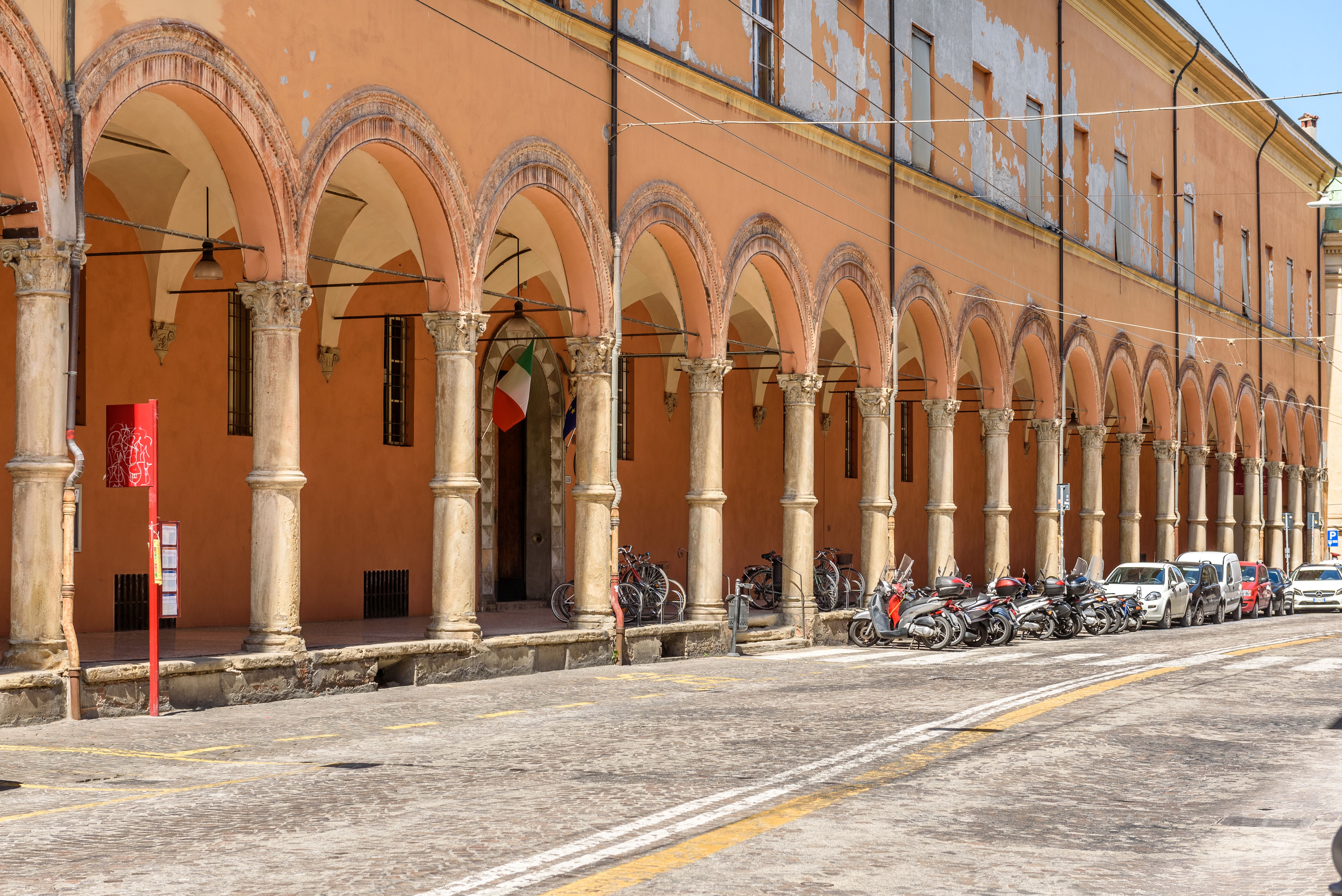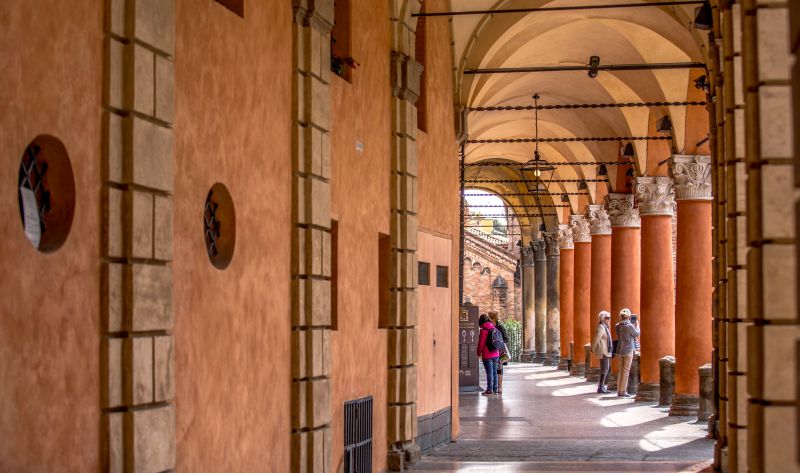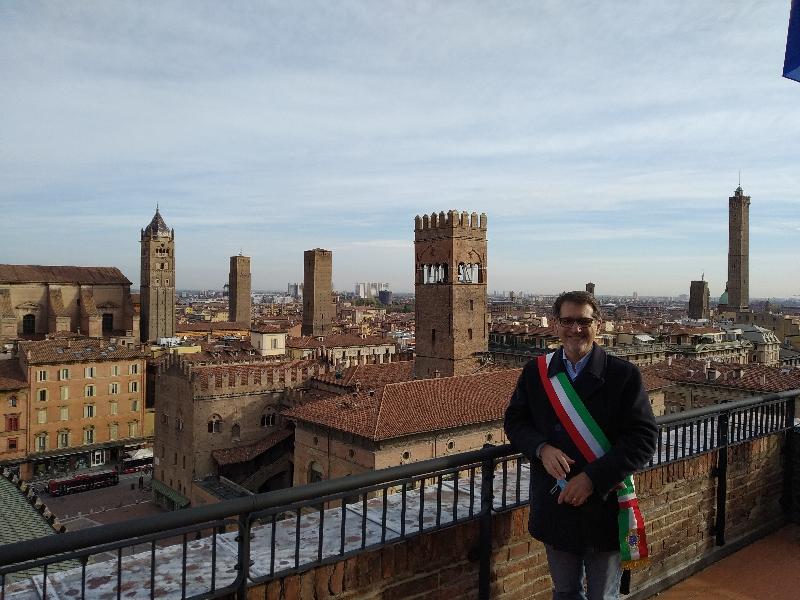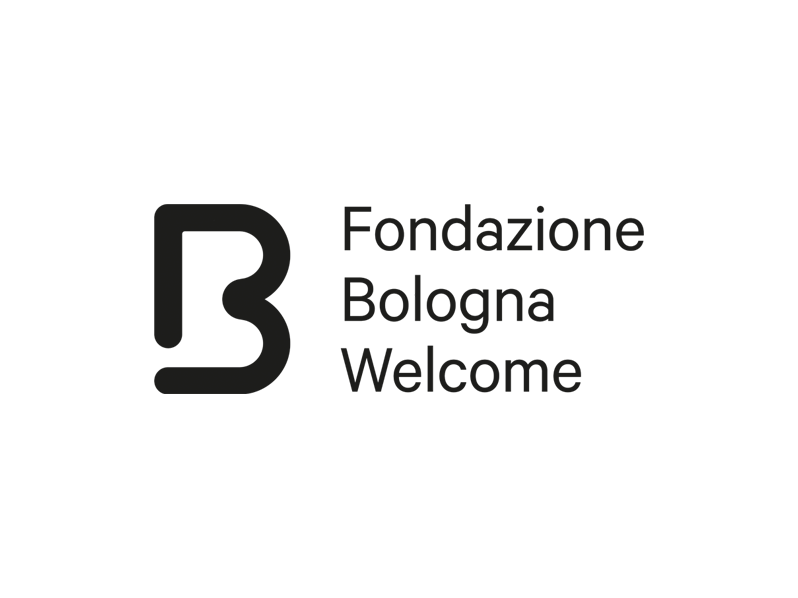There is no other city in the world that has the variety and length (62 kilometres) of Porticoes that Bologna has. From San Luca to Piazza Cavour, from via Santa Caterina to the Treno della Barca: it is an architectural and urban network that surrounds our city and represents a unique entity on the world panorama.
Find out how Bologna is working towards the nomination of the porticos as a Unesco World Heritage Site
Why have the Porticoes been suggested as candidates for UNESCO world heritage?
We are working hard to ensure that our Porticoes are candidates for UNESCO world heritage. At the base of this candidacy there is a very thorough research work, both on the historical, urbanistic but above all social level. The porticoes in Bologna are, in fact, considered everyone's home, a meeting place and a place that protects, from the sun as well as from the rain. It is one of the symbols of our city and the candidacy path is also an important civic bet because this challenge is felt by all the inhabitants of the city and brings us all together.
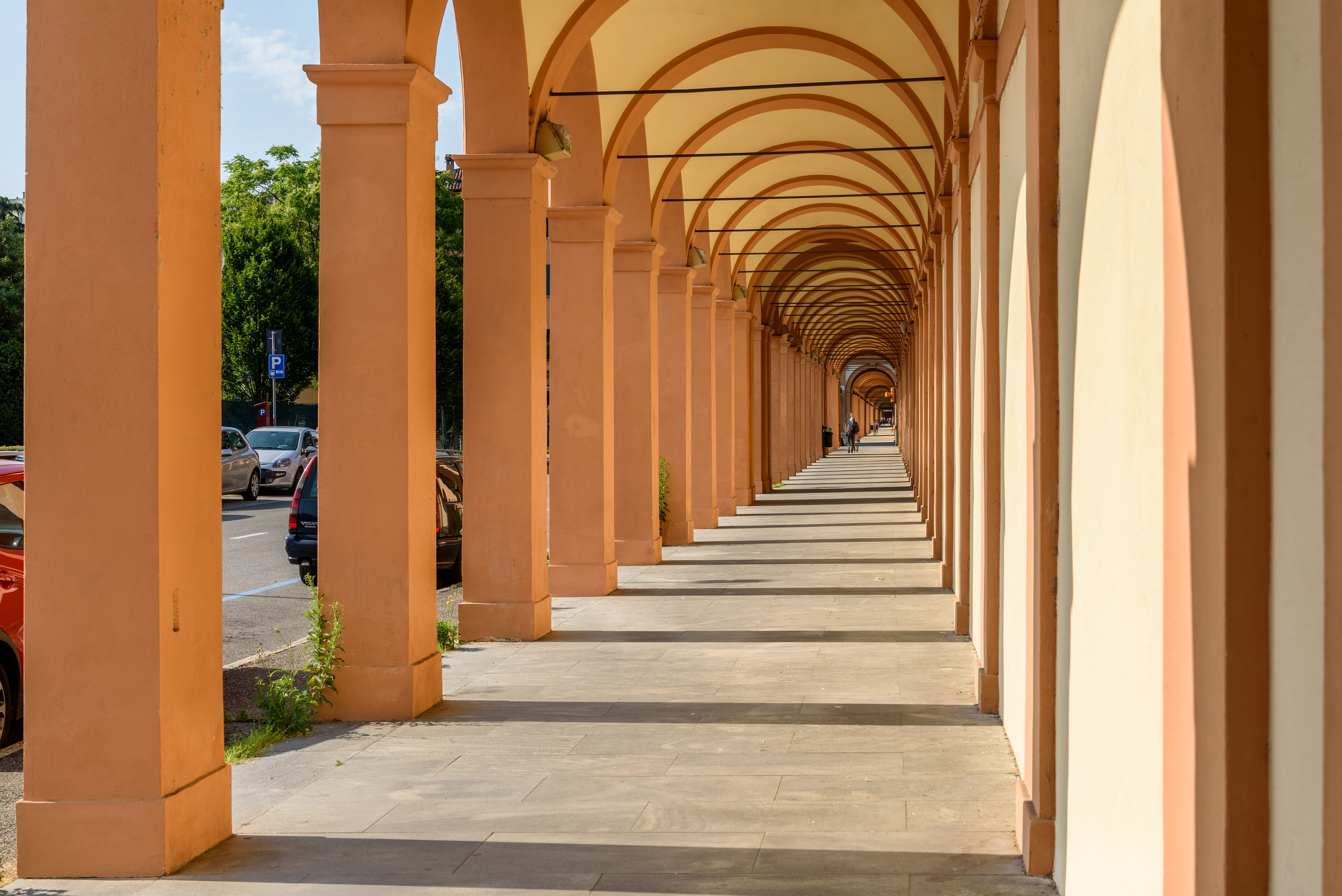
Which are the Porticoes?
Residential Porticoes of Santa Caterina
The portico of via Santa Caterina extends for about 140 m from via Ca' Selvatica to via Saragozza. At the intersection with via Ca' Selvatica there is a small Marian aedicule that had the task of monitoring the life of the inhabitants as a vote for having stopped the outbreak of cholera in the mid-800s.
Porticoes of Piazza Santo Stefano
Piazza Santo Stefano is dominated by the Basilica bearing the same name and is surrounded by the Porticoes of the noble buildings overlooking the square, of medieval and Renaissance origin. In some Porticoes the retaining wall can still be seen as a protectionto be able to walk without the risk of stumbling, getting dirty or run into horses or carts.
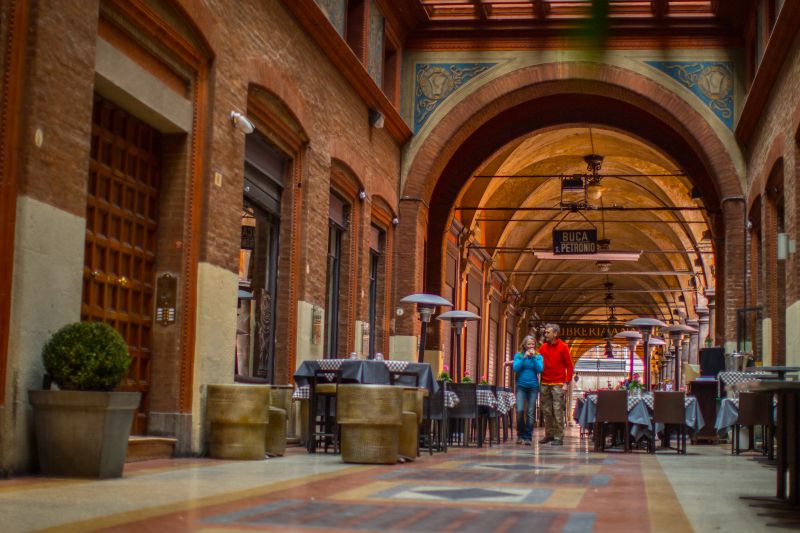
Porticoes of via Galliera
Until the late nineteenth century via Galliera represented the access road to the city centre from the north and, for this reason, the nobility at the time believed it was a symbol of prestige and privilege to build their residence here. The Porticoes of Palazzo Ghisilardi and Palazzo Dal Monte are of great importance.
Porticoes of the Baraccano
The Baraccano Conservatory overlooks via Santo Stefano with a long portico, which ends in a high fifteenth-century vault, constituting a very peculiar urban setting. The capitals of the portico are adorned with cornucopias, acanthus leaves, animals and cherubs accompanied by coats of arms of the Bentivoglio family going back to the origins of the construction.
Commercial Porticoes of the Pavaglione and of the Banchi
The area between piazza Galvani and piazza Maggiore, together with the arcades of the Banchi and Pavaglione has been characterised, since the Middle Ages, by an extraordinary urban mercantile system that has not lost its original vocation as the commercial heart of Bologna, continuing to develop a strong cultural, institutional and service interest for the city.
Devotional portico of San Luca
The portico of San Luca develops along the eastern side of Monte della Guardia, south-west of Bologna, and links the relationship between the sanctuary-city and the nearby countryside in a unique entity that sums up the salient features of Bolognese civilisation and culture. Walking through the portico, prospective scenarios open up towards the city and towards the surrounding landscape. The devotional path is marked by the 15 "Mysteries of the Rosary".
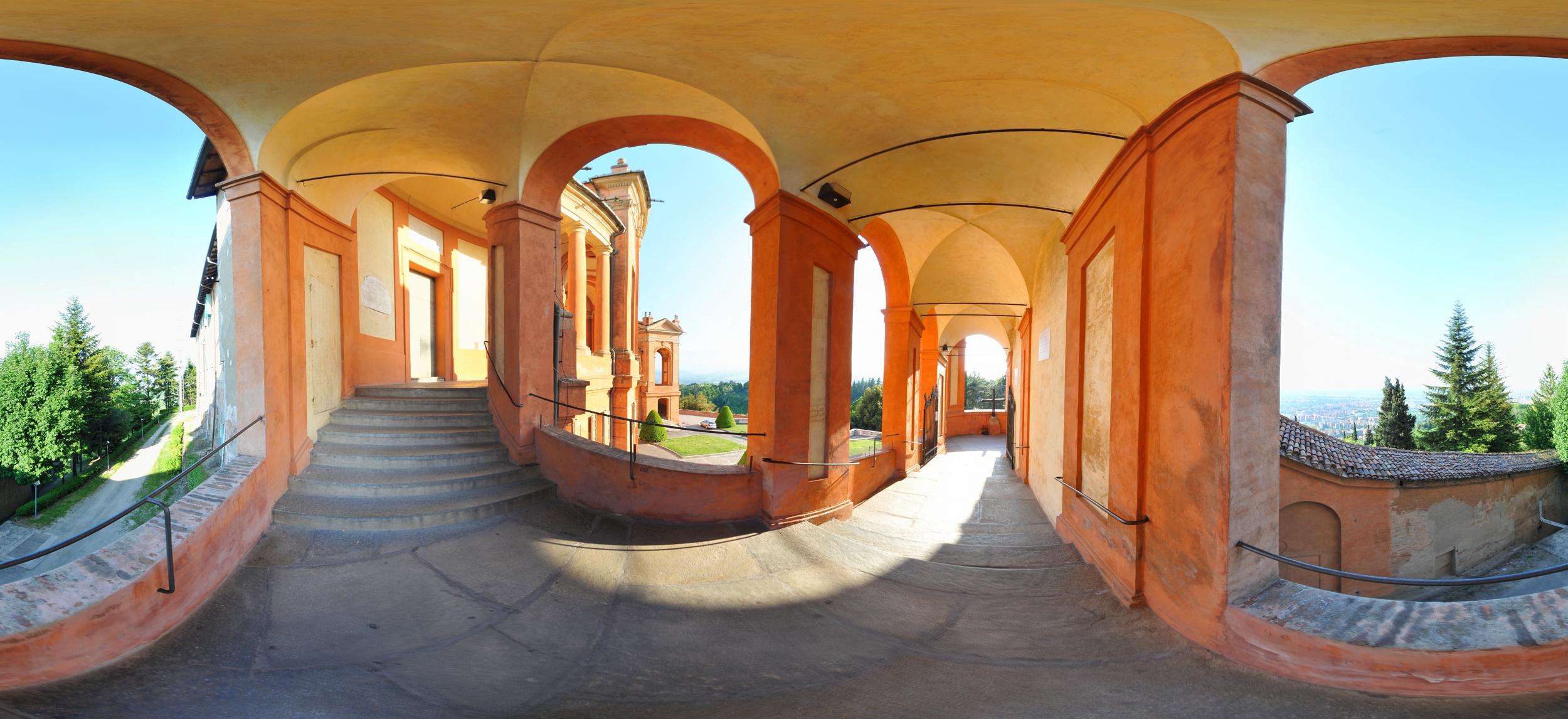
Academic Porticoes of via Zamboni
The appearance that via Zamboni has today is intimately linked to the history of Bologna, marked by the collaboration between the Municipality and the university institution. The portico of Palazzo Poggi is characterised by the alternation of Dorian columns and pillars that underline the beginning and the end of the portico and frame the central portal.
Path of porticoes of the Monumental Cimitery of Certosa
The path of porticoes of the Certosa develops south-west of Bologna and connects the monumental cemetery with the city centre, thanks to the junction with the portico of San Luca. The neoclassical arcade constitutes a long covered path, which evokes the ancient Roman funerary roads: it was in fact expected to become a real burial gallery.
Porticoes of Piazza Cavour and via Farini
Overlooking piazza Cavour are the Porticoes of Palazzo Guidotti, of sixteenth-century origin, of Palazzo Silvani, which recalls the Florentine architecture, and of the headquarters of the Bank of Italy, decorated with griffins, centaurs and garlands. On via Farini, the portico of the Cassa di Risparmio represents an important example of eclectic style, with flamboyant and magnificent shapes, designed to demonstrate the wealth and social role of the first banking institution in modern Bologna.
Triumphal Porticoes of Strada Maggiore
This is the ancient route of the via Emilia, a Roman consular road, which deviates its course at the city of Bononia to settle on the pre-existing decumanus maximus, today via Rizzoli - Ugo Bassi. Here the Porticoes are the expression of different eras and styles but the impression is however that of a continuum, of a compactness that in reality is only perceived.
Treno della Barca (Train of the Barca) portico building
The long building called "Train" in the Barca district is a clear example of contemporary use of the portico and constitutes the centre of the district, both from a figurative point of view and in terms of collective life. The building is slightly curved and extends for about 600 metres.
MAMbo portico building
The MAMbo portico shows how the portico element is a constant that goes beyond the simple architectural function. The building, in fact, passes from the productive function, former Forno del Pane (Bakery), to the cultural one, preserving the portico as the main element for the exchange and relationship between city and society.



